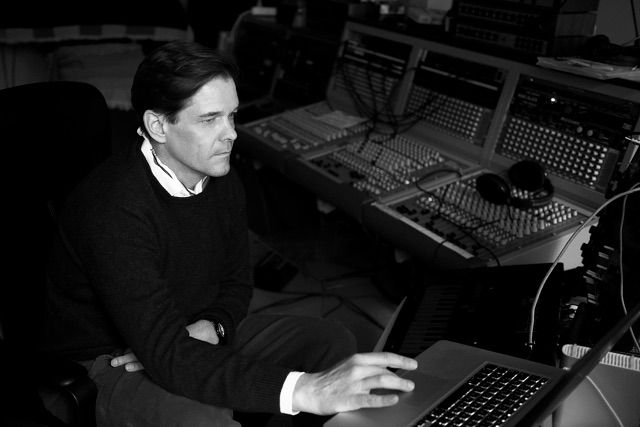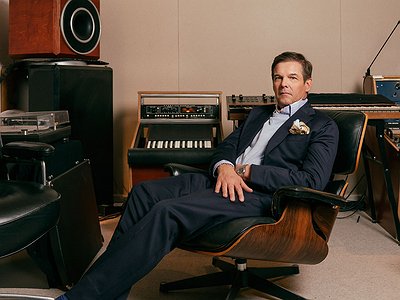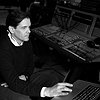Name: Moritz von Oswald
Occupation: Composer, producer, improviser, sound artist
Nationality: German
Current release: Moritz von Oswald's new album Silencio is out via Tresor. Recorded as a hybrid work for electronics and choir, it was inspired by Edgard Varèse, György Ligeti and Iannis Xenakis, and features the voices of the Vocalconsort Berlin.
If you enjoyed this Moritz von Oswald interview and would like to find out more about his music, visit him on Instagram, and Facebook.
Over the course of his career, Moritz von Oswald has collaborated with, remixed pieces by, and contributed to tracks of Carl Craig, Juan Atkins, Nils Petter Molvær, Thomas Fehlmann, Sasu Ripatti / Vladislav Delay, Max Loderbauer, Eddie Flashin Fowlkes, Marc Romboy, Stephan Bodzin, Francesco Tristano, and Vince Clarke.
[Read our Nils Petter Molvær interview]
[Read our Thomas Fehlmann interview]
[Read our Vladislav Delay interview]
[Read our Max Loderbauer interview]
[Read our Eddie Flashin Fowlkes interview]
[Read our Marc Romboy interview]
[Read our Stephan Bodzin interview]
[Read our Francesco Tristano interview]
[Read our Vince Clarke interview]
What memories do you have of the Silencio recordings?
I had just come back from a DJ gig, I think from Norway. I was completely exhausted. But when I arrived there, I was wide awake from one second to the next.
I had only played with a choir in an orchestra once before. And I realised from conducting that how extremely difficult it is to get the music together. Especially when it comes to opera. I'm a big fan of opera, I have to emphasise that. Especially when it comes to the choir: once you've been exposed to a choir piece that means something to you, it's simply incredible. These voices have such depth!
What makes it so complicated to bring these two musical forms together is that the voices in the orchestra - the violins and violas - have a very soft attack. You can achieve a similar effect with voices as well, of course. But you have to pay a lot of attention to the consonants.
And that was also the case with these recordings, especially in Italian. The vowels are not an issue, but the consonants, with their hard attack, were not always entirely convincing on the part of the singers. At least that's how I felt.
But I must also say that I was lucky to have a large choir in the first place and that I wasn't alone: I think it was also a challenge for the conductor, Jarkko Riihimäki.
It's interesting that you can narrow it down so precisely to the consonants.
Consonants like "k" or "p" are musically important elements. Rhythm is always a point of consideration.
In which way?
You have to ask yourself: Where is the rhythm? It can only be created through consonants.
With strings, there are certain pieces from Expressionism, Stravinsky for example, where the rhythms of the strings are incredibly important. If you don't get them right, the framework of the composition collapses. That's what I experienced in this case with the consonants.
Did the singers know the electronic parts while they were singing? Or were these parts of the compositions created separately?
No, that was a separate process, which I would say is improvisational in nature. In the studio, I responded directly to the mood of the singers with my electronic elements.
Giving them another layer would also have been an overflow of stimuli. Already singing what has been transcribed was a complicated matter. But the transcription was very good. Jarkko, with whom I've worked a lot in thje past, already knows this from me. There are tonal, ... I wouldn't say clusters ... but certain tone blocks ... partly with micromotonal, rubbing intervals, and they were also important to me. I then emphasised these when recording the last piece.
I still remember this. It was at the end of a concentrated recording session. I told the ensemble: I would really like to have a microtonal oscillation here. You can also hear that in certain other pieces, right in the background. It's important to listen to the background in the pieces on this album anyway. That's where the framework becomes clear.
After the recordings with the choir, was it just a matter of putting the electronics and choir together or was there still some composing work to be done?
There was quite a lot of editing. Nothing was done within the choir parts. But I did create a few entirely new pieces afterwards.
Simply because I felt the album was missing something in terms of the overall picture. That's why I added an instrumental, "Librarsi."
What is your relationship to your own voice – and to the human voice in general?
For me, it's always a question of power, of strength. Just when we are talking to each other on the phone like this, you already realise what power a voice carries.
And when you're sitting at a traffic junction, the traffic also has a palpable power with which it "speaks". When you approach Gregorian chants, the spirit that resonates is greater than the subject being sung about.
How does traffic "speak"?
When you see the movement of the traffic or simply listen to it, it's like a kind of block of sound, a block of noise. I just feel drawen to that. Phenomena like this … they're all systems. Or take noise in an aeroplane or the sound of the aeroplane itself ... Once you get into it, you find complex, powerful sound material which I really like.
You can also relate this to the cover of Silencio, this nautilus. If you imagine what sounds canbe found at the bottom of the sea ... it's something I could not live without.
And the exciting thing is that Cyprien Gaillard, who did the design, developed this concept even though he had heard very little of the music. He only had a very small impression of the finished work, which I had given him here in my studio.
The title Silencio - is that a reference to the silence that the listener feeels feel when she is exposed to the music?
The question has of course come up several times. This piece has been available for editing for a long time and I've been carrying it around with me and Tresor for a long time.
It was always called Silencio and, especially in the context of club music, I thought this music could use a bit of silence.
Silence can also be an experiment.
Yes, although the earlier productions I made with Mark Ernestus were always experimental music as well. I was under the influence of many different inspirations. But we experimented with these influences, just like we experimented with sounds.
My idea was always for my studio to be a giant pair of headphones. That's what I continued to do and that was ultimately the path to success. This spatiality that the early productions have is a component of the whole track: rhythmic noise was one of these components. But we didn't sit down and say: OK, now let's do something with noise. It was more the result of certain experiments.
There was a certain spontaneity. This spontaneity also plays a role in Silencio. I reacted spontaneously to the voices in the studio.
Moritz von Oswald Interview Image (c) the artist
It's an experiment - and definitely outside the cosmos of club music this time.
I always try to find music that you can really sit down and listen to, especially in a club context. But that hasn't been happening much lately. I can't find any interesting new productions. Maybe I'm not open-minded enough. But I have really been looking for something like this for a long time.
Jeff Mills' new project, Tomorrow Comes The Harvest, was therefore a very good move and shows that he doesn't want to makr time. It doesn't always have to be functional.
[Read our Jeff Mills interview]
[Read our Jeff Mills interview about Metropolis]
[Read our Jean-Phi Dary interview]
[Read our Prabhu Edouard interview]
Edgard Varèse, whom you hold in high esteem, said that we perceive everything that is not yet familiar to the ear as noise.
I don't know all of his quotes. (laughs) But I've always been very enthusiastic about the way Varèse worked with percussion. And, of course, he would make inspiring use of the sounds he got to know through his trips abroad.
The most obvious example is the use of a police car siren that he heard once in New York. I played "Ionisation" myself with great pleasure.
What was important to you when choosing the equipment? The press release mentions classic analogue synthesizers such as EMS VCS3 & AKS, Prophet V, Oberheim 4-Voice and Moog Model 15
Again, it's something we keep coming back to: Their power. On top of that, it should be instruments that I generally experiment with a lot. By chance or by listening to them intently, I found certain instruments that seemed to be singing.
Sure, that's a pretty personal impression. Others might not feel that way. But that's what I'm hearing. Yet other synths convey the feeling of orchestral instruments.
None of this is down to these instruments being analogue. I think that the importance of the equipment has been somewhat overemphasised in the press release.
Do you see a contrast between artificially produced sound and humanly produced sound?
If you listen deeply, deep into the background, then it makes no sense to describe synthetic sounds as "artificial". Only if you're listening on the surface.
Calling something artificial basically just means you're unfamiliar with it.





